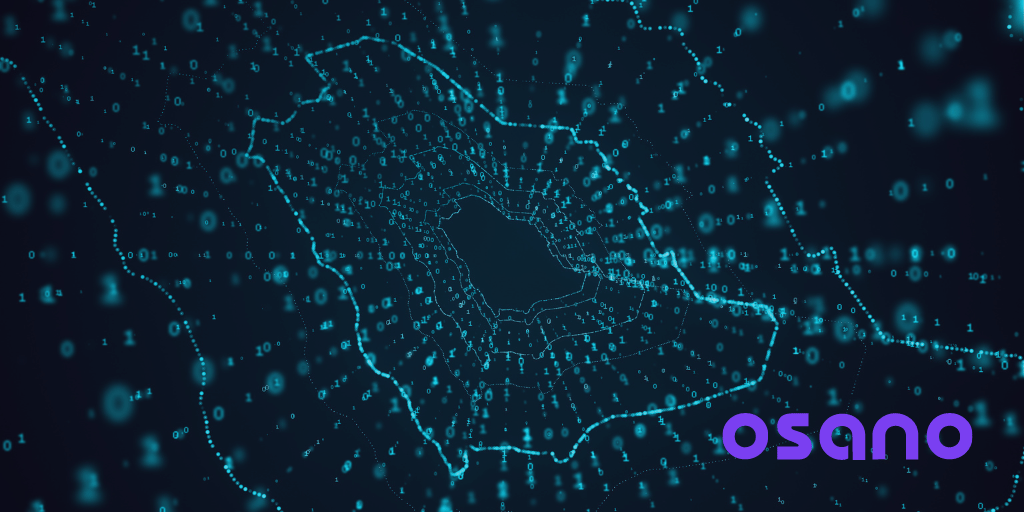
Multi-Hyphenate Privacy Professionals: 3 Strategies for Success
When we write about data privacy, it’s easy to default to talking to...
Read NowGet an overview of the simple, all-in-one data privacy platform
Manage consent for data privacy laws in 50+ countries
Streamline and automate the DSAR workflow
Efficiently manage assessment workflows using custom or pre-built templates
Streamline consent, utilize non-cookie data, and enhance customer trust
Automate and visualize data store discovery and classification
Ensure your customers’ data is in good hands
Key Features & Integrations
Discover how Osano supports CPRA compliance
Learn about the CCPA and how Osano can help
Achieve compliance with one of the world’s most comprehensive data privacy laws
Key resources on all things data privacy
Expert insights on all things privacy
Key resources to further your data privacy education
Meet some of the 5,000+ leaders using Osano to transform their privacy programs
A guide to data privacy in the U.S.
What's the latest from Osano?
Data privacy is complex but you're not alone
Join our weekly newsletter with over 35,000 subscribers
Global experts share insights and compelling personal stories about the critical importance of data privacy
Osano CEO, Arlo Gilbert, covers the history of data privacy and how companies can start a privacy program
Upcoming webinars and in-person events designed for privacy professionals
The Osano story
Become an Osanian and help us build the future of privacy!
We’re eager to hear from you
Updated: February 27, 2025
Published: August 13, 2024

Sprawling. That’s one way to describe the nature of data and responsibilities in modern organizations.
There’s a lot of personally identifiable information (PII) and sensitive data to track, and knowing what lives where so you can respond appropriately to data requests and protect data privacy is a big challenge. In fact, recent research revealed that only 34 percent of businesses have conducted data mapping and understand data practices across their organization. Given this, it's likely that many organizations process PII and sensitive data without realizing it and without applying the appropriate protections.
Let’s explore how to identify PII and conduct sensitive data mapping, the importance of privacy-oriented mapping, and how to get started on your privacy data mapping journey.
Mapping PII and sensitive data is a critical part of overall data mapping because it impacts your company’s ability to comply with data privacy laws and mitigate risks associated with the collection of this type of data.
The General Data Privacy Regulation (GDPR), the California Consumer Privacy Act, and the California Privacy Rights Act (CCPA/CPRA) are the most demanding of organizations in terms of protecting consumer data. Additionally, new regulations, such as the Maryland Online Data Privacy Act (MODPA), continue to be enacted, making it even more important to understand where sensitive and PII data are located and where it travels. The MODPA, effective October 1, 2025, mandates data mapping and privacy impact assessments for any data activities presenting a heightened risk of harm to consumers.
Privacy data mapping is a focused exercise dedicated to identifying, documenting, and managing personal information, PII, and sensitive data within an organization's data ecosystem. This process involves tracking data flows, understanding how data is collected, processed, stored, and shared, and ensuring compliance with privacy regulations.
Unlike general data mapping exercises, privacy data mapping zeroes in on the nuances of personal data, considering the legal and ethical obligations associated with its handling.
Multiple departments within an organization, such as IT and cybersecurity, may engage in data mapping exercises, but these efforts are not necessarily useful when it comes to data privacy compliance. Although IT and cybersecurity teams focus on identifying and managing data, their objectives and scopes differ significantly from those of privacy data mapping.
IT and cybersecurity teams excel in managing data integrity, security, and overall system performance, but their data mapping efforts primarily focus on the technical aspects and system-level data flows. These efforts often lack the granularity and context required to address legal and regulatory requirements, such as data subject rights, consent management, and data minimization mandated by laws like GDPR and CCPA. A privacy-specific data mapping tool ensures a detailed, contextual understanding of personal data usage, processing purposes, and legal bases, which are critical for maintaining compliance and avoiding costly penalties.
| Objectives | Scope | Key Concerns | |
| Privacy Data Mapping | Focuses on compliance with privacy laws and regulations, ensuring data subjects' rights are protected and that the organization handles personal data ethically. | Specifically targets personal and sensitive data, identifying where this data resides, who has access to it, how it is used, and how it is shared. | Legal compliance, data subject rights, consent management, data minimization, and data retention policies. |
| IT/Cybersecurity Data Mapping | Primarily aims to protect the organization’s data assets from breaches, ensuring data integrity, confidentiality, resilience, and availability. | Encompasses all types of data, with a broader focus on securing data infrastructure, detecting vulnerabilities, and protecting against cyber threats. | Network security, data encryption, access controls, incident response, and threat detection. |
Privacy professionals are uniquely positioned to lead privacy data mapping efforts due to their expertise in data protection regulations and their understanding of the ethical considerations involved in handling personal information. Unlike IT and cybersecurity teams, whose primary focus is on technological safeguards and infrastructure security, privacy professionals bring a nuanced perspective that integrates legal, ethical, and operational considerations.
Privacy data mapping enables organizations to:
Additionally, downstream activities such as vendor risk assessments, incident response preparation, implementing data retention and minimization controls, and more are significantly easier when they draw upon effective privacy data mapping. This specialized approach ensures that personal data is handled with the highest standards of protection and compliance.
In the realm of privacy-oriented data mapping, it's crucial to distinguish between personal information, PII, and sensitive information. Understanding and identifying the types of data your organization may be collecting and processing is essential to mapping the right data effectively. Each type of data carries different implications for how it must be handled, protected, and shared within an organization.
Personally Identifiable Information: While PII is personal data, not all personal data is PII. It sounds confusing, but only data that can trace or distinguish an individual’s identity or that can be linked to an individual is considered PII.
“Distinguish” means the ability to identify one individual over another, and “trace” refers to gathering enough information to understand a person’s status or activities.
A few common examples of PII include a person’s email address, phone number, or Social Security number. These pieces of information can be tied to a specific person.
It’s important to note that the definition of PII varies between data privacy regulations, so it’s essential to understand which you’re obligated to follow and how it’s defined.
Personal Information: The term “personal information,” or PI, is most often used in U.S. data privacy laws.
Though PI and PII are closely related, the CCPA and CPRA define PI to include “information that identifies, relates to, or could reasonably be linked to a particular consumer or household.” Examples of PI under the California privacy regulations could include a consumer’s name, email address, records of products purchased, internet browsing history, geolocation data, fingerprints, and inferences about the consumer’s preferences and characteristics.
Sensitive Information: Like PII, sensitive information can have different definitions based on the language of the data privacy law. In general, sensitive data is personal data that requires greater protection through increased security. It may also require opt-in consent for its collection or even be banned altogether from being collected by organizations.
If exposure of the data could result in impacts like harm to the individual, discrimination or stigmatization, or identity theft, it’s most likely sensitive data. Some examples include:
Privacy data mapping involves creating two key elements: a data inventory and a data map. The inventory lists all personal information—including PII and sensitive data—that the company is responsible for and the information needed to manage it. The data map will visually represent what’s in the inventory.
To build a data inventory, start by asking several foundational questions:
Where does your organization store PII and sensitive data? Be sure to account for all data stores, including databases, data warehouses, data lakes, apps, archives, the cloud, and other locations. Understanding where data is stored is critical in creating a PII and sensitive data inventory.
Who is responsible for managing that data? Identify data owners and managers for each location where PII and sensitive data are stored.
What is the process for collecting and processing PII and sensitive data? Most data privacy laws require consent to collect PII and sensitive data, and controllers are obligated to only process it for necessary and stated purposes. Take the time to map the entire data lifecycle, from data collection points to management practices, processing activities, and vendors involved in processing.
Once you have your data inventory, there are a few ways to create your data map. One approach is through manual mapping with the aid of software like a spreadsheet program. There are also more automated, user-friendly data mapping tools designed to handle personal information, PII, and sensitive data, like Osano.
Manual mapping involves spreadsheets, a lot of legwork, and collaboration with IT, procurement, finance, and other internal teams, and connecting with each data owner to establish or confirm compliance. It sounds labor intensive because it is, and it has to be repeated regularly.
Using software is a step up from manual mapping. While it produces more accurate results, finding the right solution for your organization that adequately addresses the data privacy component can be challenging. It’s also important to consider that a privacy professional still needs to be involved in the process, even if there’s software to help ease the burden.
Then, there’s Osano, which offers a suite of privacy-focused solutions, including tools for mapping PII and sensitive data to meet data privacy compliance. With this type of solution, privacy professionals can:
Osano data mapping helps you maintain a holistic, up-to-date approach to privacy compliance that meets the most stringent data protection regulations.
If you’re ready to take control of your organization’s sensitive data with a privacy-first approach, book a demo with Osano.
Want to get started with data mapping but don't know how? This checklist walks you through all the fundamental steps.
Download Now
Osano Staff is pseudonym used by team members when authorship may not be relevant. Osanians are a diverse team of free thinkers who enjoy working as part of a distributed team with the common goal of working to make a more transparent internet.
Osano is used by the world's most innovative and forward-thinking companies to easily manage and monitor their privacy compliance.
With Osano, building, managing, and scaling your privacy program becomes simple. Schedule a demo or try a free 30-day trial today.